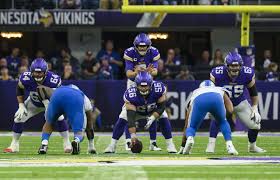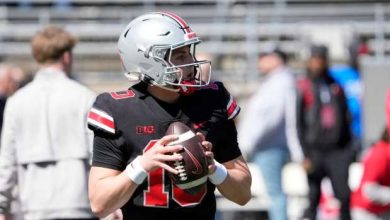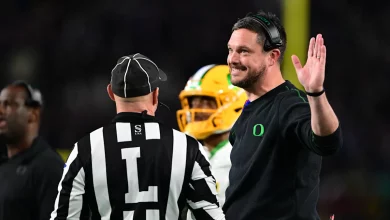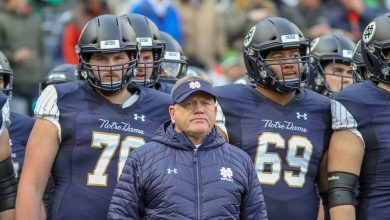To continue winning, the Vikings must break their run of poor draft selections and invest in young players.

The Minnesota Vikings are a team at a crossroads. While they have shown resilience and competitiveness in recent seasons, their long-term success will heavily depend on how they navigate the upcoming years in terms of roster building. One of the most critical areas for the Vikings to address in their quest to remain competitive is the draft. The team has suffered from a run of disappointing draft selections, which has hindered their ability to build a sustainable, high-level team. To continue winning and remain competitive in the long term, the Vikings must break their cycle of poor draft decisions and focus on investing in young, high-potential players.
The importance of a strong draft class cannot be overstated. The NFL is a league driven by young talent, and teams that succeed in the draft can build rosters capable of sustained success. For the Vikings, it’s not just about finding good players, but finding the right players who fit their system, can develop over time, and become key contributors in both the short and long term. In this article, we’ll explore the current state of the Vikings’ roster, review the history of their draft selections, and discuss why it’s crucial for them to break the cycle of poor drafts. Additionally, we’ll highlight some key areas where the team can invest in young talent to improve their future prospects.
The Current State of the Vikings’ Roster
As of 2024, the Vikings have been a competitive team, finishing with a winning record in the NFC North. However, despite a solid roster and strong leadership from head coach Kevin O’Connell, there are several areas where the team has been inconsistent, and much of that inconsistency can be attributed to poor draft selections over the years. The Vikings have had some success with mid-round picks, but they have struggled in recent years to consistently hit on their first-round selections.
Key positions such as quarterback, offensive line, and defensive backfield have been areas where the team has needed sustained improvement, and while the Vikings have invested in veteran players in those spots, they haven’t been able to consistently find young talent to fill these critical roles. Additionally, the defensive line and wide receiver corps are areas where the Vikings have lacked enough depth and elite-level talent to take them over the top in the postseason.
The Vikings have a talented quarterback in Kirk Cousins, but his time in Minnesota is limited, and the team will soon need to find a young signal-caller to build around for the future. They also have one of the best wide receivers in the game in Justin Jefferson, but surrounding him with young, dynamic talent will be key for the team’s long-term success. The defense, which has shown flashes of brilliance, also needs reinforcements, especially in the secondary and at linebacker.
The Vikings’ Draft History and Its Impact on Their Current Roster
The Vikings’ draft history over the past several years has been mixed at best, and in some cases, downright disappointing. Although they’ve made a few successful picks, their inability to consistently hit on key draft selections has left them with gaps in their roster that have been difficult to fill through free agency or trade.
In 2019, the Vikings made a critical decision by selecting Garrett Bradbury with their first-round pick. At the time, Bradbury was seen as a potential franchise center, but his performance has been underwhelming, particularly in pass protection. The Vikings’ offensive line has remained a weak spot, and Bradbury’s struggles have highlighted the failure to address this critical position adequately through the draft. While he has shown improvement at times, the team still hasn’t found a long-term solution at the position.
In 2020, the Vikings made another important selection by drafting Jeff Gladney in the first round. However, Gladney’s career was tragically cut short due to legal issues, leaving the Vikings in a difficult spot. The Vikings’ secondary has struggled since, and finding a reliable starting cornerback has been a pressing issue. The inability to get a return on their investment in Gladney left the Vikings scrambling to find a cornerback to replace him.
In 2021, the Vikings made another gamble with their first-round pick, selecting Christian Darrisaw, a highly touted offensive tackle out of Virginia Tech. Darrisaw has shown promise, but injuries have hampered his ability to stay on the field consistently. The team has been forced to adjust their offensive line around him, and while Darrisaw has shown flashes of brilliance, his overall development has been slow.
While these examples of the Vikings’ draft struggles are not exclusive, they highlight a pattern of selecting players with potential but failing to develop them into consistent contributors. This pattern of disappointment has compounded the team’s inability to address critical needs, and it’s clear that the Vikings need to change course in the upcoming drafts to build a more sustainable, successful roster.
Breaking the Cycle: Why the Vikings Must Focus on Quality Draft Selections
To break the cycle of poor draft selections, the Vikings need to change their approach to scouting and player evaluation. A successful draft requires more than just identifying talented players; it requires a team to draft players who fit their system, have the potential for growth, and can contribute immediately. The Vikings need to be more deliberate in their selection process and target players who can make an impact both right away and in the future.
1. Investing in a Young Quarterback
One of the most pressing issues for the Vikings is finding their next franchise quarterback. Kirk Cousins has been a reliable, above-average quarterback for Minnesota, but his age and contract situation mean that the team will need to find his successor in the coming years. The 2025 NFL Draft could be the perfect opportunity for the Vikings to find their quarterback of the future.
With the Vikings’ offensive system under Kevin O’Connell evolving, investing in a quarterback who can grow in that system would be ideal. A young quarterback could learn under Cousins for a year or two before taking over the starting job. The Vikings must use their draft capital wisely and invest in a quarterback who has the potential to develop into a long-term starter. The importance of hitting on this pick cannot be overstated—this could be the key to the team’s future success.
2. Strengthening the Offensive Line
Another key area that the Vikings must address through the draft is the offensive line. Despite some improvement, Minnesota’s offensive line still ranks among the worst in the league, particularly in pass protection. To maximize Kirk Cousins’ and later the next quarterback’s potential, the Vikings must invest in quality offensive line talent.
In recent drafts, the team has addressed the line with players like Christian Darrisaw, but the job is far from finished. The team will need to draft more offensive linemen, specifically at guard and center, to shore up the interior line. With a young quarterback eventually taking over and Justin Jefferson needing more time to run routes, the Vikings need to provide their quarterback with adequate protection and a balanced running game.
3. Revamping the Defense
On the defensive side of the ball, the Vikings need to continue investing in young talent. While players like Harrison Smith, Eric Kendricks, and Zadarius Smith have been key contributors for years, the Vikings’ defense lacks the level of athleticism and playmaking ability needed to compete with the NFL’s top offenses.
In particular, the Vikings need to focus on upgrading their secondary, especially at cornerback. The team has had issues at corner for years, and it’s a position that requires consistent investment to remain competitive. Additionally, the defensive line needs to be bolstered to create more pressure on opposing quarterbacks. Finding disruptive players who can affect the pocket will go a long way in improving the defense’s overall performance.
4. Adding Depth at Wide Receiver
While Justin Jefferson is one of the NFL’s best wide receivers, the Vikings need to add depth and explosiveness to their wide receiver corps. With Adam Thielen aging, there’s a clear need to bring in younger players who can complement Jefferson and help the team’s passing game flourish. The Vikings could use a draft pick to add speed, size, or a versatile receiver who can contribute immediately.
A Critical Crossroads
The Minnesota Vikings find themselves at a critical crossroads in their quest to remain competitive in the NFC North and beyond. To continue winning, they must break their cycle of poor draft selections and focus on building a roster of young, talented players who can grow and contribute over time. With critical needs at quarterback, offensive line, defense, and wide receiver, the team must invest heavily in the upcoming draft classes to build a sustainable foundation for the future.
While their current roster is solid, the Vikings cannot afford to neglect the importance of youth and development. The future of the franchise depends on how well they draft and develop young talent in the coming years. By breaking the cycle of poor draft selections and making smarter, more deliberate choices, the Vikings can set themselves up for long-term success and position themselves as a true contender in the NFC.









